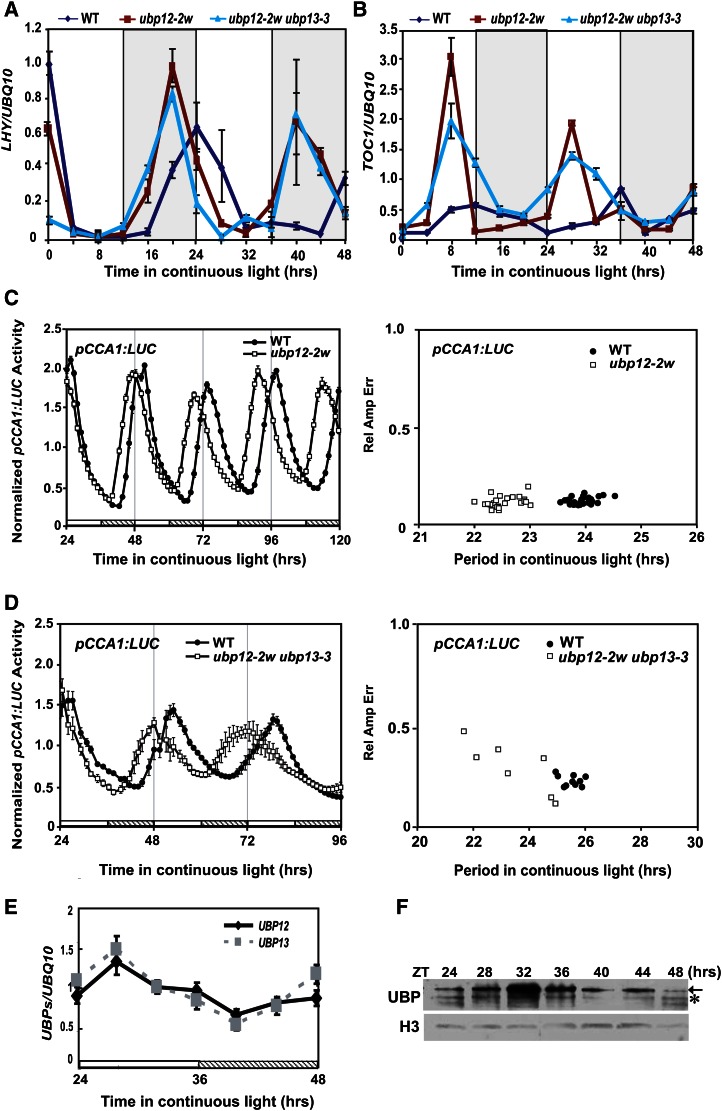Figure 5.
Mutation of UBP12 and UBP13 shortens the circadian period under LL. The expression patterns of LHY (A) and TOC1 (B) under LL condition were analyzed by qRT-PCR. Wild-type, ubp12-2w, and ubp12-2w ubp13-3 plants were grown for 10 d in 12-h-light/12-h-dark cycles before released to LL and sampled every 4 h from ZT0. Circadian rhythm of pCCA1:LUC was detected in transgenic seedlings in ubp12-2w (n = 23; C) or ubp12-2w ubp13-3 (n = 7; D). The pCCA1:LUC transgenic plants in ubp12-2w and ubp12-2w ubp13-3 were grown for 7 or 15 d, respectively, in 12-h-light/12-h-dark cycles and transferred to LL at ZT 0. Relative amplitude error is a measure of the strength of the oscillation. Statistical analysis of period length showed that in each case, the periods of ubp12-2w and ubp12-2w ubp13-3 were shorter than that of the wild type (P < 0.001). UBP12 and UBP13 expression levels were tested from ZT 24 to 48 by qRT-PCR in wild-type plants (E). Values are means ± sd of three independent experiments. The protein level of UBP12/UBP13 under LL was tested by immunoblot using UBP12/UBP13 antibodies from ZT 24 to 48 (F). The arrow indicates the UBP protein position. The asterisk indicates the nonspecific band. H3 was used as the loading control. WT, Wild type.

